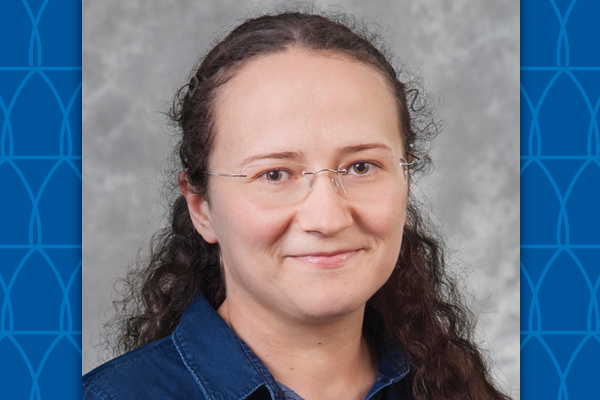
Transcription factors bind to DNA to help control gene regulation. They help ensure that the right genes are expressed in the right cells at the right time by binding to their target sites quickly and selectively. Just as a person may be drawn to a specific book in a library, a transcription factor is drawn to a specific target in DNA. But what happens when transcription factors pick the wrong target?
Raluca Gordân, PhD, associate professor of biostatistics and bioinformatics, and team investigated how transcription factors may affect the production of genetic mutations, or mutagenesis, by binding to the wrong sites after being exposed to ultraviolet (UV) radiation. This is an important step in being able to identify drivers of cancer, in this case, melanoma, which is the most serious type of skin cancer. Their results were published in PNAS on March 8.
While typically transcription factors bind onto regular, undamaged DNA, they can also bind to damaged DNA. “If that binding is strong enough,” Gordân said, “then we hypothesize that they can interfere with DNA repair.”
DNA repair is initiated by the recognition of specific DNA lesions by dedicated proteins. Then a series of enzymes come in and remove and heal the damaged section of DNA. But if a transcription factor and a repair protein want to bind to the same spot, that competition can cause problems.
“There’s less efficient recognition of lesions by the repair enzymes,” Gordân said, “and if the repair enzyme doesn’t bind to the lesion, the repair doesn’t happen.”
Collaborator Bennett Van Houten, PhD, professor at University of Pittsburgh, added, “This could cause increased mutations and cancer development.”
When DNA is exposed to UV light, specific types of damages occur, and the base pairs cytosine and thymine pair with other cytosine and thymine instead guanine and adenine, respectively. These mismatches form bulges that tend to bend the DNA.
Using a method the team developed called UV Bind, they looked at how transcription factors bind to DNA after they have been exposed to UV radiation, and they found that binding doesn’t follow the exact same patterns that it does for non-irradiated DNA.
“We see decreased binding, which may be expected,” Gordân said, “but we also see some transcription factors start to bind to DNA that it wouldn’t have otherwise only after it had been irradiated.”
After further testing, they found more patterns and believe there is potential for transcription factors to rearrange where they go in the genome after UV radiation exposure.
“Our results show that UV damages shape the interactions between regulatory proteins and their targets,” said Zack Mielko, first author and graduate student in the Gordân lab. “We are just beginning to understand the implications for gene regulation and mutagenesis in UV exposed cells.”
There’s a lot more to explore here, and the team hopes to develop predictive models to help them better understand how transcription factors binding to lesions influences the mutation landscape in melanoma.
“If we can do that,” Gordân said, “we will have a better chance for identifying non-coding drivers of melanoma.”
Want to know more? Read the Commentary article from PNAS